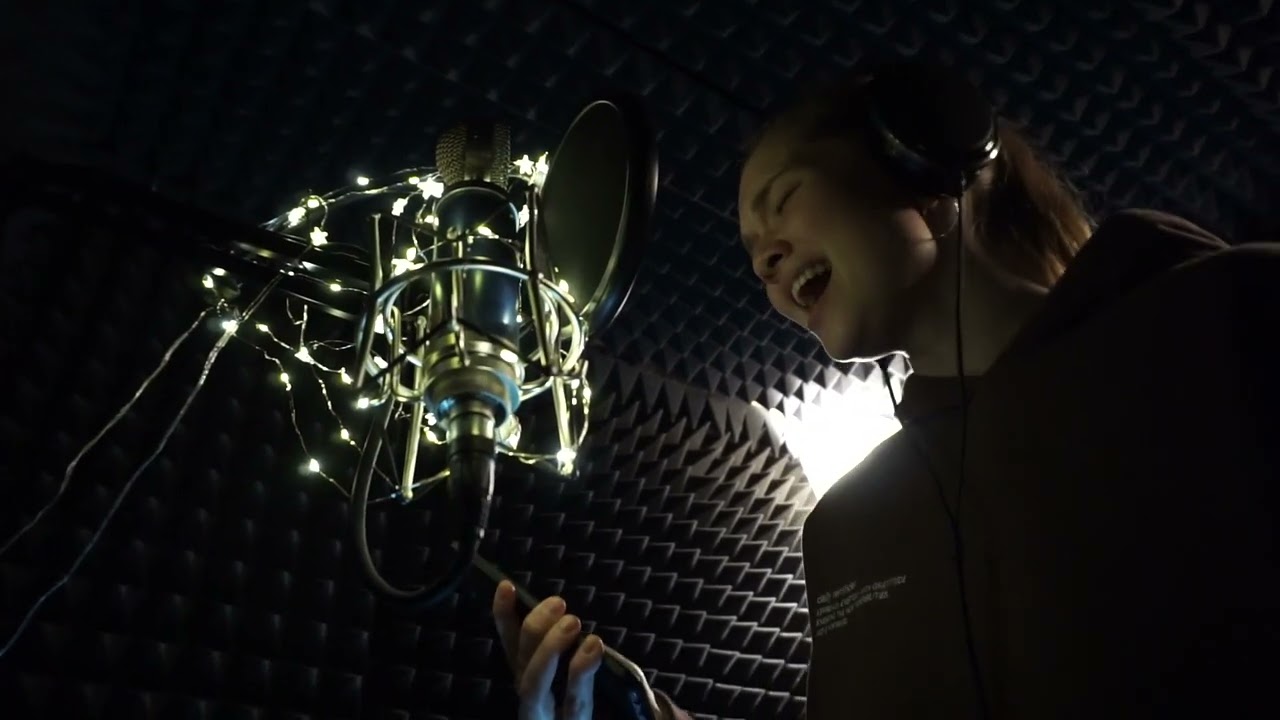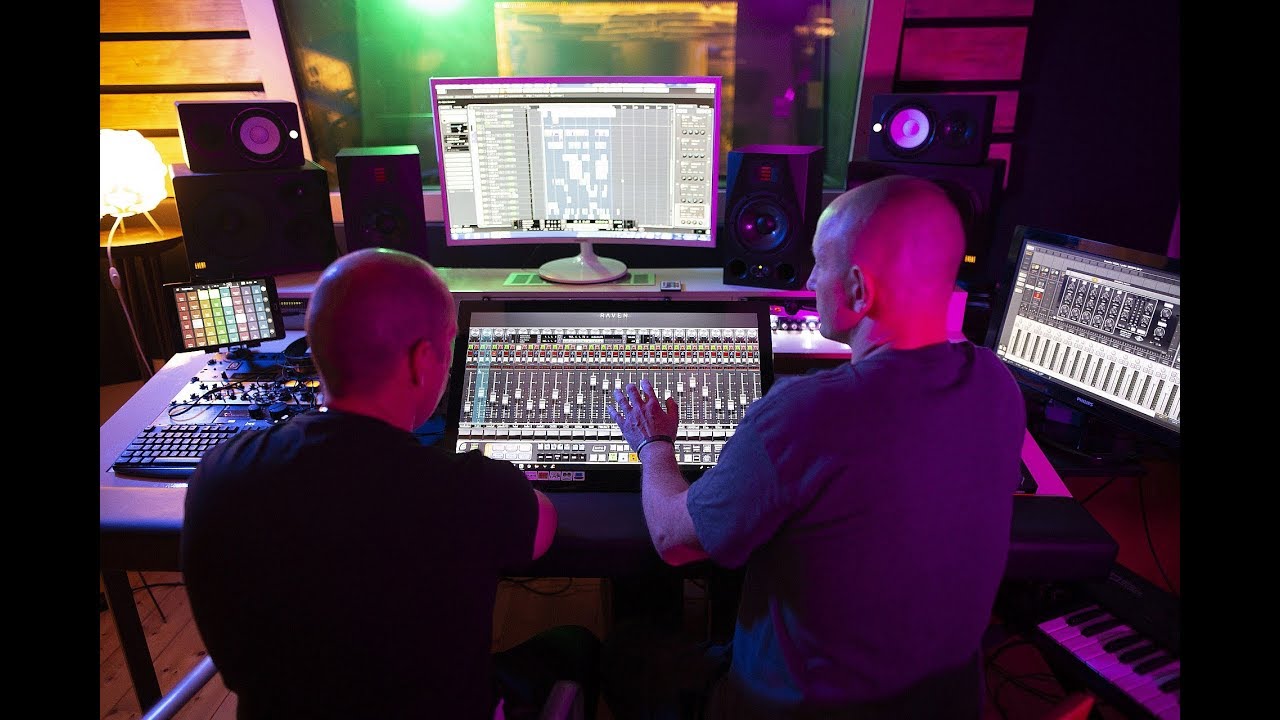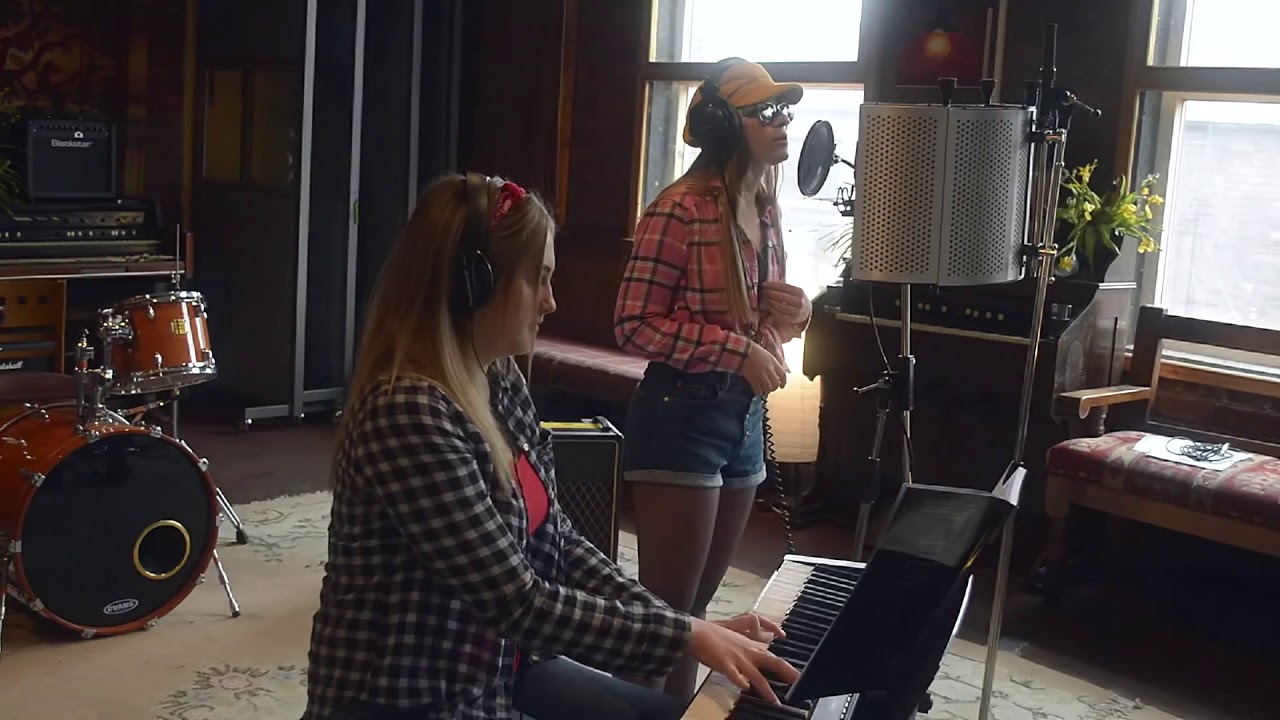Home>Production & Technology>Cover Song>How To Make A Remix Of A Cover Song


Cover Song
How To Make A Remix Of A Cover Song
Modified: February 20, 2024
Learn how to create a unique and captivating remix of a cover song. Explore techniques and tips to make your version stand out from the rest.
(Many of the links in this article redirect to a specific reviewed product. Your purchase of these products through affiliate links helps to generate commission for AudioLover.com, at no extra cost. Learn more)
Table of Contents
- Introduction
- Choosing the Right Cover Song
- Understanding the Original Version
- Exploring Different Remix Styles
- Acquiring the Necessary Tools and Software
- Isolating and Manipulating Vocal Tracks
- Experimenting with Instrumentation and Arrangement
- Adding Unique Effects and Elements
- Mixing and Mastering the Remix
- Sharing and Distributing Your Remix
- Conclusion
Introduction
When it comes to music, cover songs have a special place in our hearts. They allow artists to pay tribute to their favorite songs while putting their own unique spin on them. However, what if you want to take it a step further and create a remix of a cover song? Remixing a cover song can be a thrilling and creative endeavor that allows you to add your own personal touch to an already beloved track.
In this article, we will explore the process of making a remix of a cover song. We will discuss the importance of choosing the right cover song, understanding the original version, exploring different remix styles, and acquiring the necessary tools and software. Furthermore, we will delve into isolating and manipulating vocal tracks, experimenting with instrumentation and arrangement, adding unique effects and elements, and finally mixing and mastering the remix.
Whether you are an aspiring music producer or a seasoned remix artist, this guide will provide you with the knowledge and insights needed to create a remix of a cover song that is not only unique and captivating, but also pays homage to the original artist.
So, let’s dive in and learn how to transform a cover song into an innovative and compelling remix!
Choosing the Right Cover Song
The first step in creating a remix of a cover song is choosing the right song to work with. While you may have a personal favorite in mind, it’s crucial to consider a few factors before making a final decision.
First and foremost, it’s important to choose a cover song that you are passionate about. Select a song that resonates with you, evokes emotions, and inspires creativity. This connection will drive your motivation throughout the remixing process and ensure that you pour your heart and soul into the final product.
Another factor to consider is the popularity and familiarity of the cover song. Opting for a well-known track can be advantageous as it already has an established fan base. This can potentially attract more listeners to your remix. However, keep in mind that remixing a highly recognizable song can be challenging, as listeners may have certain expectations for how it should sound. Striking a balance between familiarity and originality is key.
Additionally, consider the genre and style of the cover song. Choose a genre that aligns with your own taste and expertise. This will make it easier for you to add your own unique touch and elevate the original song to new heights. Experimenting with different genres can also bring a fresh perspective to the cover song and make your remix stand out.
Lastly, think about the potential audience for your remix. Consider who your target audience is and what type of music they enjoy. This will help you narrow down your choices and create a remix that appeals to your desired listeners. Remember, the goal is to both honor the original artist’s work while showcasing your own creativity and style.
By taking these factors into consideration, you can choose the right cover song that ignites your passion, resonates with your audience, and provides ample opportunities for creative exploration. With the right foundation in place, you’ll be ready to embark on the exciting journey of remixing a cover song.
Understanding the Original Version
Before diving into remixing a cover song, it is essential to have a comprehensive understanding of the original version. This involves analyzing various elements such as the song structure, key signature, tempo, and overall vibe.
Start by listening to the original cover song multiple times and paying attention to its different sections, such as the verse, chorus, bridge, and any instrumental breaks. Understanding the song’s structure will allow you to identify where you can add your own creative elements and how you can rearrange the components to create a unique remix.
Next, focus on the key signature of the original cover song. Is it in a major or minor key? Knowing the key will help you harmonize your remix elements effectively and maintain coherence with the original version.
Tempo is another crucial aspect to consider. Is the original cover song fast-paced and energetic, or slow and mellow? Understanding the tempo will guide your decision-making process when it comes to selecting appropriate beats, drum patterns, and overall pacing for your remix.
Pay close attention to the vocals in the original cover song. Study the melody, phrasing, and lyrics. This will help you determine how you can manipulate and remix the vocals in your version. You can experiment with pitch correction, vocal effects, and even incorporate new vocal elements to enhance the overall sound.
Take note of any unique instrumental sounds or motifs present in the original song. These could be guitar riffs, piano melodies, or synth patterns. By identifying these elements, you can decide whether to incorporate them in your remix or create new ones that complement the overall vibe.
Lastly, consider the mood and emotions conveyed in the original cover song. Is it a happy, upbeat tune, or a heartfelt ballad? Understanding the emotional tone will help you craft a remix that captures and enhances the original feelings or brings a fresh perspective to the song’s emotional impact.
By thoroughly understanding the original version of the cover song, you will be equipped with the knowledge needed to approach the remix in a thoughtful and creative manner. This understanding will serve as the foundation for transforming the cover song into something entirely new and captivating.
Exploring Different Remix Styles
When it comes to remixing a cover song, one of the most exciting aspects is the opportunity to explore different remix styles. Remixes can range from subtle reinterpretations to radical transformations, and the style you choose will determine the overall vibe and impact of your remix.
Here are a few popular remix styles to consider:
- Club Mix: This style focuses on creating a remix suitable for the dancefloor. It often features an extended intro and outro, driving beats, energetic rhythms, and build-ups leading to epic drops. Club mixes are perfect for DJs looking to incorporate the cover song into their sets and get the crowd moving.
- Chillout Remix: If you prefer a more relaxed and laid-back vibe, a chillout remix might be the way to go. This style often incorporates smoother beats, soothing melodies, and atmospheric sounds to create a mellow and tranquil atmosphere. It’s a great option for those looking to showcase the vocals of the cover song in a more intimate and introspective setting.
- Electro Remix: For a futuristic and edgy approach, an electro remix can add a new dimension to the cover song. This style typically includes distorted synths, heavy basslines, and intricate electronic elements. It’s an excellent choice for those looking to give the cover song a modern and unique twist.
- Acoustic Remix: Stripping down the cover song to its acoustic elements can create a raw and heartfelt version. An acoustic remix often features acoustic guitar, piano, and minimalistic percussion. It allows the vocals to take center stage while showcasing the song’s lyrics in a more intimate and organic way.
- Genre Fusion: Combining elements from different genres can result in a fascinating and unconventional remix. Experiment with blending genres like pop with reggae, rock with EDM, or hip-hop with jazz. Genre fusion remixes can offer a fresh and unexpected take on the cover song, appealing to a wide range of listeners.
Remember, the remix style you choose should complement the original cover song while showcasing your creativity and unique perspective. Don’t be afraid to think outside the box and push the boundaries of what is expected. The ultimate goal is to create a remix that captivates and engages the listener, bringing a fresh and exciting experience to the familiar cover song.
Acquiring the Necessary Tools and Software
Before diving into the process of remixing a cover song, it is essential to ensure that you have the necessary tools and software to bring your creative ideas to life. Here are some key components you may need:
- Digital Audio Workstation (DAW): A DAW is the heart of your remixing setup. Popular DAWs include Ableton Live, FL Studio, Logic Pro, and Pro Tools. Choose a DAW that you are comfortable with and suits your workflow. These software platforms provide essential features for recording, editing, arranging, and mixing your remix.
- Samples and Loops: Investing in high-quality sample packs and loops can greatly enhance your remix. Look for packs that offer a variety of drum beats, percussion elements, basslines, and melodic samples. These resources can be a great starting point for building the foundation of your remix.
- Virtual Instruments: Virtual instruments allow you to add realistic and synthesized sounds to your remix. Whether it’s virtual pianos, guitars, synths, or orchestral instruments, having a selection of virtual instruments can expand your sonic palette and bring depth to your remix.
- Effects Plugins: Effects plugins are essential for adding creative and technical enhancements to your remix. Reverb, delay, compression, EQ, and distortion plugins can help shape the sound of individual tracks and the overall mix. Explore different plugins and experiment with various settings to achieve the desired results.
- Monitoring Equipment: Having a reliable pair of studio monitors or headphones is crucial for accurately listening to and evaluating the sound of your remix. Invest in quality monitoring equipment that provides a flat frequency response, allowing you to make informed decisions during the mixing and mastering stages.
- MIDI Controller: While not mandatory, a MIDI controller can significantly improve your workflow. MIDI keyboards, drum pads, and control surfaces allow for intuitive and hands-on control of virtual instruments, effects, and recording features in your DAW.
It’s important to note that the specific tools and software you need may vary depending on your preferences, budget, and the complexity of your remix. Expanding your collection of plugins, instruments, and samples over time can help you refine your sound and explore new possibilities.
Be sure to keep your software and plugins up to date with the latest versions to take advantage of new features and improvements. Additionally, familiarize yourself with the functionalities of your tools through tutorials and online resources.
By acquiring the necessary tools and software, you’ll be equipped with the means to bring your remix ideas to fruition. The right tools combined with your creativity and passion will empower you to create unique and compelling remixes that stand out in the music landscape.
Isolating and Manipulating Vocal Tracks
One of the most crucial elements in remixing a cover song is the vocals. By isolating and manipulating the vocal tracks, you can create a remix that brings a fresh perspective to the original vocals and adds your own creative touch. Here are some techniques to help you accomplish this:
1. Vocal Extraction: Start by extracting the vocal tracks from the original cover song. Some audio editing software, like iZotope RX, offer tools specifically designed for vocal extraction. These tools use advanced algorithms to isolate the vocals from the rest of the audio. However, keep in mind that achieving a perfect vocal extraction can be challenging, especially if the original song has complex arrangements. Therefore, manual vocal extraction might be necessary in some cases.
2. Cleaning and Editing: Once you have the isolated vocal tracks, it’s essential to clean up any unwanted noise, background hiss, or pops. Use audio editing techniques such as noise reduction, de-essing, and EQ to polish the vocals and ensure they sound clear and professional.
3. Time Stretching and Pitch Shifting: Time stretching and pitch shifting can offer creative possibilities when remixing vocals. Experiment with altering the tempo and pitch of the vocal tracks to fit your desired remix style. However, be mindful of maintaining the natural flow and coherence of the vocals while making these adjustments.
4. Chopping and Re-arranging: Another technique to consider is chopping the vocal tracks into smaller sections and re-arranging them in unique ways. This allows you to create new vocal patterns, hooks, and variations that add excitement and interest to your remix. Experiment with different arrangements and transitions to give your remix a distinct and innovative touch.
5. Vocal Effects and Processing: Applying effects and processing to the vocal tracks can enhance the overall sound and create a signature sound for your remix. Experiment with effects like reverb, delay, chorus, and vocal harmonizers to add depth and dimension to the vocals. However, ensure that the effects you use complement the style and mood of the remix.
6. Layering and Harmonies: Consider layering additional vocal tracks or harmonies to enrich the sound of the vocals. This can add depth and texture to the remix, making it more captivating and dynamic. Experiment with different vocal arrangements and harmonies to find the right balance that complements the original cover song while adding your own unique touch.
By isolating and manipulating the vocal tracks, you can transform the cover song’s vocals into something entirely new and exciting. These techniques allow you to showcase your creativity and bring a fresh perspective to the remix, setting it apart from the original version.
Experimenting with Instrumentation and Arrangement
Once you have the vocals sorted, it’s time to dive into the creative process of experimenting with instrumentation and arrangement. This stage allows you to infuse your remix with your own musical style while maintaining a connection to the original cover song. Here are some key aspects to consider:
1. Instrument Selection: Choose instruments that complement the mood and style of your remix. Consider the genre you’re working in and explore different virtual instruments, samples, or live recordings to find the perfect fit. Experiment with a combination of acoustic and electronic sounds to create a unique sonic palette.
2. Rhythm and Groove: Develop a rhythm and groove that sets your remix apart. Consider altering the drum patterns, adding new percussive elements, or incorporating unique rhythmic patterns to create a fresh and interesting musical foundation. Pay attention to the interaction between the vocals and the rhythm section to ensure a cohesive and engaging arrangement.
3. Melodic Variation: Experiment with the melodies and harmonies in your remix. Look for opportunities to introduce new melodic elements, create variations on the original melody, or even modify the chord progression to add an unexpected twist. This will help make your remix stand out from the original cover song.
4. Breakdowns and Build-ups: Consider incorporating breakdowns and build-ups in your remix to create moments of anticipation and impact. Experiment with stripping down the instrumentation, using atmospheric sounds, or introducing unexpected elements to build tension and excitement before launching back into the main sections of the remix.
5. Structural Changes: Explore different structural changes in your arrangement. You can elongate or shorten sections, modify the order of the verses or choruses, or even create entirely new sections to give your remix a unique and fresh feel. Remember to maintain a sense of coherence while pushing the boundaries of the original arrangement.
6. Dynamics and Transitions: Pay attention to the dynamics within your remix. Create contrast by adding softer and louder sections, using crescendos or decrescendos, or incorporating gradual transitions between different parts of the track. Well-executed dynamics and transitions can add excitement and create a captivating listening experience.
By experimenting with instrumentation and arrangement, you can transform the cover song into a remix that reflects your artistic vision. Don’t be afraid to take risks, think outside the box, and let your creativity shine. The goal is to create a compelling and innovative musical experience that pays tribute to the original cover song while showcasing your unique style and creativity.
Adding Unique Effects and Elements
To truly make your remix of a cover song stand out, it’s important to add unique effects and elements that enhance the overall sound and create a distinctive sonic experience. Here are some techniques and ideas to help you in this process:
1. Sound Design: Experiment with sound design techniques to create unique and captivating sounds. This can involve manipulating and molding existing samples, using synthesis to create custom sounds, or incorporating unconventional and ambient textures. Sound design adds depth and interest to your remix, making it truly memorable.
2. Creative Effects: Explore a wide range of effects to add character and excitement to your remix. From subtle effects like filters and delays to more extreme effects like granular synthesis or glitch effects, these creative tools can shape the timbre and texture of your remix. Use effects in moderation, ensuring they enhance the mood and style of your remix rather than overpowering the original cover song.
3. Vocal Processing: Continually experiment with different vocal processing techniques to transform the vocals and give them a unique sound. Consider using pitch correction, vocal doubling or harmonization, stutter effects, or vocoder effects to add a fresh perspective to the vocals. Be creative but ensure that the processing enhances the emotional impact of the original vocals.
4. Unique Instrumentation: Add new and unconventional instruments or unique instrumental elements to your remix. From sampled or synthesized sounds to live recordings of uncommon instruments, incorporating unique instrumentation can bring a fresh and unexpected flavor to the remix. Think outside the box and find ways to surprise and engage your listeners.
5. Atmospheric Textures: Introduce atmospheric textures and soundscapes to create a sense of space and depth in your remix. Whether it’s ambient drones, field recordings, or manipulated background noises, these textures can add an immersive and captivating dimension to your remix, setting it apart from the original cover song.
6. Experimenting with Song Structure: Consider pushing the boundaries of the original song structure. Break free from traditional songwriting norms and experiment with unconventional arrangements, unexpected breakdowns, or extended intros and outros. This can take your remix to another level and create an exciting and memorable sonic journey.
Remember, the goal is to add unique effects and elements that enhance the remix without overshadowing the essence of the original cover song. Be intentional with your choices and listen critically to ensure that the additions you make contribute to the overall quality and creativity of your remix.
By incorporating unique effects and elements, you can create a remix that captivates and intrigues listeners, showcasing your artistic flair and elevating the cover song to new heights.
Mixing and Mastering the Remix
The final stages of creating a remix of a cover song are mixing and mastering. These processes are crucial for ensuring that your remix sounds polished, balanced, and ready for release. Let’s delve into each of these stages:
Mixing: Mixing is the process of balancing and blending all the individual elements of your remix to create a cohesive and well-defined sound. Here are some key steps to consider during the mixing stage:
- Balance: Adjust the volume levels of each track, including the vocals, instruments, and effects, to achieve a harmonious balance. Ensure that no element is overpowering or getting lost in the mix.
- Panning: Utilize panning techniques to position each element within the stereo field. This helps create a sense of width and separation in your remix.
- EQ and Compression: Use equalization (EQ) to sculpt the frequency balance of individual tracks, making sure they sit well together in the mix. Employ compression to control dynamic range and add punch and clarity to your remix.
- Effects and Automation: Experiment with various effects like reverb, delay, modulation, and spatial effects to enhance the depth and character of your remix. Additionally, use automation to control parameters over time and add movement to your mix.
- Stereo Imaging: Use stereo imaging techniques to create a sense of width and depth in your mix. This can involve widening certain elements, enhancing stereo separation, and ensuring a balanced stereo image.
Mastering: Mastering is the final step in the process, where the mix is refined and prepared for distribution. The aim is to create a cohesive and polished sound across all playback systems. Here are some key steps and considerations during the mastering stage:
- EQ and Compression: Apply subtle EQ and compression to the entire mix to balance frequencies, enhance clarity, and control dynamics.
- Stereo Enhancement: Use stereo widening techniques sparingly to add a sense of space and width to the final mix.
- Loudness and Dynamics: Optimize the loudness of the remix to ensure it is competitive with other commercial releases, while also preserving dynamic range and avoiding over-compression.
- Spectral Balance: Analyze the frequency spectrum of the remix to ensure a balanced and coherent sound across the entire frequency range.
- Quality Control: Listen critically to your mastered remix on different playback systems to ensure it sounds consistent and translates well across various devices and environments.
Remember, the mixing and mastering stages are crucial for achieving a professional and polished sound. If you’re unsure about these processes, consider seeking guidance from a professional audio engineer or utilizing online mastering services to optimize the quality of your remix.
By investing time and care into the mixing and mastering stages, you can elevate your remix to its fullest potential and deliver a final product that holds up to industry standards and captivates your listeners.
Sharing and Distributing Your Remix
Once your remix of the cover song is complete, it’s time to share it with the world and get it into the hands and ears of music enthusiasts. Here are some essential steps to consider when sharing and distributing your remix:
1. Platform Selection: Determine where you want to share your remix. Popular platforms for sharing music include SoundCloud, YouTube, Bandcamp, and social media platforms like Instagram and Twitter. Research the platforms that best align with your target audience and choose the ones that have a strong presence in the music community.
2. Metadata and Artwork: Make sure to add proper metadata to your remix, including the song title, artist name, and additional information about the original cover song. Additionally, create eye-catching artwork that represents your remix. Visual appeal can make a significant impact when it comes to grabbing the attention of potential listeners.
3. Copyright and Licensing: Be mindful of copyright laws and licensing requirements when sharing your remix. If you plan to distribute your remix commercially or publicly, it’s crucial to obtain the necessary permissions from the original artist or rights holder. Alternatively, you can release your remix as a free promotional item or seek out remix competitions that offer legal and protected platforms for sharing your remix.
4. Networking and Promotion: Take advantage of your social networks and online communities to promote your remix. Share it with friends, fellow musicians, and followers on social media. Engage with music communities, forums, and groups that are relevant to your remix style. Collaborate with other artists or remixers to expand your reach and create cross-promotional opportunities.
5. Collaborate with Influencers: Approach tastemakers, DJs, and music influencers who may be interested in sharing your remix with their audience. Building relationships with influencers can help your remix gain more visibility and reach a wider audience who appreciate your style and creativity.
6. Submit to Remix Contests and Blogs: Look for remix contests hosted by labels, artists, or music platforms. Participating in such contests can give your remix exposure to a larger audience and potentially lead to recognition or even official releases. Additionally, research music blogs that accept remix submissions and send your remix to them for consideration.
7. Analytics and Feedback: Monitor the analytics of your remix using platforms like SoundCloud or YouTube. This data can provide valuable insights into the engagement and reception of your remix. Pay attention to comments, likes, and shares to gauge listener feedback and adjust your promotional strategies accordingly.
Remember to approach the sharing and distribution process with enthusiasm and persistence. It may take time to gain traction, but with consistent effort and effective promotion, your remix can find its audience and make an impact in the music community.
By sharing your remix and connecting with listeners, you can build a fan base, gain valuable feedback, and expand your reach as a remix artist. Embrace this opportunity to showcase your talent, creativity, and unique interpretation of the original cover song.
Conclusion
Remixing a cover song can be an exhilarating creative journey that allows you to put your own unique spin on a beloved track. Throughout this guide, we have explored the process of creating a remix of a cover song, from choosing the right song to sharing and distributing your final product. Let’s recap the key takeaways:
The first step in remixing a cover song is to choose a song that resonates with you and aligns with your artistic vision. Consider the popularity, genre, and emotional impact of the original cover song to make an informed decision.
In order to create a standout remix, it’s crucial to understand the original version. Analyze the song structure, key signature, tempo, vocals, and emotional tone of the cover song. This understanding will guide your creative decisions and help you maintain a connection to the original while adding your personal touch.
Experimenting with different remix styles allows you to explore creative possibilities. Whether it’s a club mix, chillout remix, electro remix, acoustic remix, or genre fusion, finding the right style will help your remix shine.
Ensure that you have the necessary tools and software to bring your creative ideas to life. Acquire a digital audio workstation (DAW) of your choice, samples, virtual instruments, effects plugins, and reliable monitoring equipment to create professional-sounding remixes.
Isolating and manipulating vocal tracks is a crucial step in remixing a cover song. Clean up the vocals, experiment with pitch and time manipulation, and incorporate creative vocal effects to transform the vocals into something unique and captivating.
During the remixing process, explore different instrumentation and arrangement techniques to infuse your own musical style. Play with rhythm, melody, dynamics, and structural changes to create an arrangement that captivates listeners.
Adding unique effects and elements can elevate your remix to new heights. Experiment with sound design, vocal processing, atmospheric textures, and unconventional instrumentation to create a sonic experience that stands out.
Take the time to mix and master your remix to ensure it sounds polished and professional. Balance the levels, apply EQ and compression, and pay attention to the overall dynamics and quality of the mix. Mastering the final product ensures that it is suitable for distribution and ready to be shared.
Once your remix is complete, share it on appropriate platforms, engage with your target audience, and seek opportunities for promotion. Networking, collaboration, and getting feedback from influencers and listeners are key aspects of gaining traction and widening your reach as a remix artist.
Remixing a cover song is a truly rewarding and artistic endeavor. It allows you to honor the original artist’s work while showcasing your own creativity and innovation. Remember to respect copyright laws and properly credit the original artist throughout the process.
So, embrace the journey, let your creativity flow, and create remixes that bring a fresh perspective to cover songs. With passion, dedication, and the techniques learned in this guide, you’re ready to embark on your own remixing adventures and leave your mark in the world of music.











